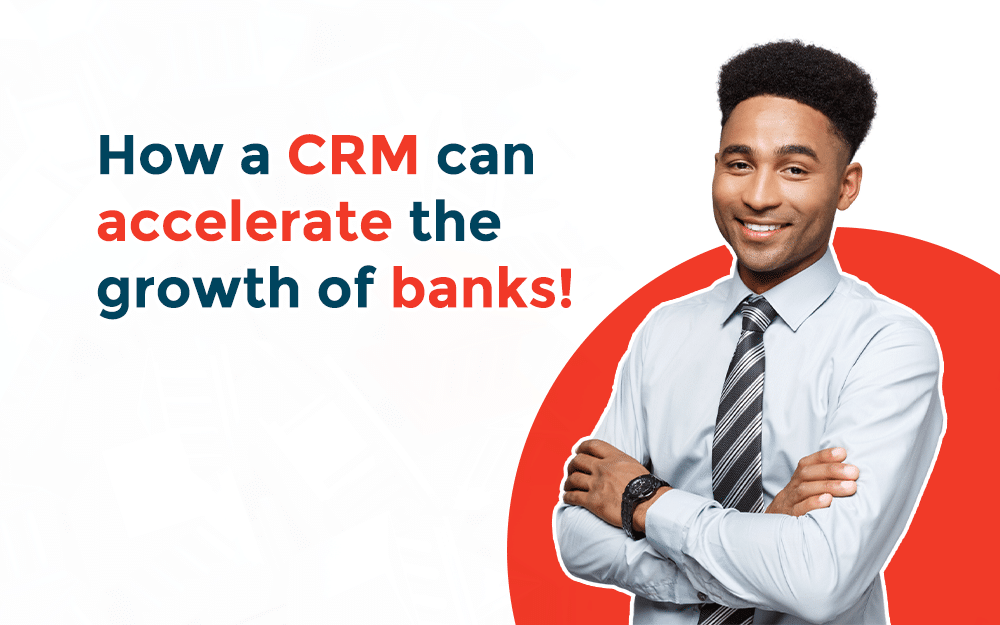In the dynamic banking landscape of Africa, digital transformation is recognized as crucial by 96% of institutions for their growth. Moreover, central to banking strategies is the goal of delivering superior customer service. As we traverse borders, CRM systems transcend their role as mere tools; they become indispensable components for growth. Whether navigating the vibrant markets of the Middle East or adhering to the stringent regulatory frameworks of Europe, CRM systems are pivotal. In light of this, the global banking CRM software market emerges as a key player, valued at $9.5 billion in 2021 and projected to reach $39.2 billion by 2031. Join us on this journey as we explore how CRM empowers financial institutions to achieve accelerated growth.
Enhancing customer experience
By customizing solutions and swiftly addressing inquiries via CRM, banks can achieve remarkable growth. Imagine this scenario: a customer seeking a loan receives pre-approved options tailored to their financial profile, while another promptly receives assistance with a card issue. Moreover, proactive outreach detects potential issues before they escalate, building trust and loyalty. This personalized, proactive strategy, enabled by CRM, enhances customer satisfaction and loyalty, attracting new clients and solidifying existing relationships. Ultimately, it propels the bank’s trajectory forward.
Strategic marketing with CRM
With the help of a CRM, your bank’s marketing can transform into a precisely calibrated growth engine. Consider offering clients customized investment options based on their risk tolerance or tailored recommendations for savings accounts according to their spending patterns. Moreover, CRM provides you with the ability to create targeted marketing campaigns, reaching the right people at the right moment. Consequently, customers are more engaged and likely to convert, while your bank remains top-of-mind with this hyper-personalized approach. Additionally, you can increase market share, draw in new business, and strengthen current connections by leveraging CRM insights to provide relevant and worthwhile experiences.
Optimizing Cross-Selling and Up-Selling
CRMs give banks the ability to fully comprehend the needs and financial objectives of their clients. Additionally, banking institutions can identify opportunities for cross-selling complementary services such as wealth management or insurance by examining transaction patterns, spending patterns, and life phases. Furthermore, offering products like higher credit limits or premium investment options enables strategic up-selling techniques in response to life events like promotions, family growth, or property purchases. Consequently, customer lifetime value rises, and revenue growth is fueled by this data-driven strategy that fosters loyalty and trust.
Data-Driven Decision-Making in Banking
CRMs are databases of customer information that are ready to be used to make well-informed decisions. Banks can gain important insights into their customer base and the larger market landscape by analyzing customer behavior, risk profiles, and market trends. Banks can now craft customized pricing strategies, individualized marketing campaigns, and improved product offerings thanks to this capability. Strategic growth and operational efficiency are fostered by banks’ ability to anticipate customer needs, proactively address challenges, and maintain a competitive edge through the integration of CRM-enhanced business intelligence.
Security Measures in Banking CRM
Security is critical in the digital age. By using industry-standard encryption protocols and access control measures, a strong CRM guarantees the secure handling of sensitive customer data. The system has embedded fraud prevention strategies that use risk-scoring algorithms and anomaly detection to find and stop suspicious activity. This steadfast dedication to data security fosters a safe and prosperous banking environment by preserving customers’ financial information and enhancing the bank’s reputation.
At Redian Software, we’re experts in creating personalized CRM programs designed to help banks expand more quickly. We liberate valuable resources by streamlining operations through meticulous automation. We guarantee a strong basis for well-informed decision-making through our dedication to data integrity during migration. Working with industry leaders like Salesforce, Odoo, and Zoho, our full-service CRM development ensures a customized and seamless experience. High-end features like custom extension development, intelligent chatbot automation, and seamless software integration are just a few of the features that our solutions offer banking institutions.
In conclusion, across Europe’s regulatory environments, the Middle East’s dynamic markets, and the core of Africa, Redian Software’s steadfast dedication to data integrity, smooth operations, and revolutionary innovation drives organizations toward rapid growth. Choose Redian Software as your strategic partner, and we’ll lead you to a safe, data-driven, and innovative future in the ever-changing banking sector.

